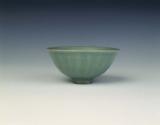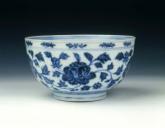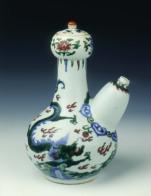Chinese Ceramics & the Early Modern World
3. Middle Eastern & Southeast Asian Markets
 in high regard, as it was believed that these dishes would discolour if exposed to poison. Potters in Iran tried to create greenwares themselves, but with only limited success, for they did not yet have the technology to produce high-fired stoneware. The production of blue-and-white tin-glazed ceramics at various kilns in Iran and Iznik (Turkey) was inspired by the import of Chinese blue-and-whites to the Middle East, which dates back to the early fourteenth century.
in high regard, as it was believed that these dishes would discolour if exposed to poison. Potters in Iran tried to create greenwares themselves, but with only limited success, for they did not yet have the technology to produce high-fired stoneware. The production of blue-and-white tin-glazed ceramics at various kilns in Iran and Iznik (Turkey) was inspired by the import of Chinese blue-and-whites to the Middle East, which dates back to the early fourteenth century. By around the turn of the fifteenth century, the popularity of greenwares had been surpassed by that of blue-and-white. The Mongol emperors were fond of designs on textiles and ceramics that included dragons and phoenixes, and reserved the dragon with five claws for the exclusive use of the court. The presence of some fourteenth-century blue-and-white dishes decorated with five-clawed dragons in the two most prominent porcelain collections of the Middle East, the Topkapi Palace in Istanbul and the Ardabil Shrine in Iran, suggests that these were gifts from Yuan or early-Ming emperors. Precious gifts such as these created diplomatic connections and political ties, as Marco Polo observed when he described the silk brocade robes being given to vassals of the Mongol Khan.
The shapes and styles of the decorations reveal the extent to which the production of porcelains had become part of cross-cultural borrowing and exchange. Potters in Jingdezhen made porcelain versions of various kinds of implements: the leather water bags favoured by horsemen on the steppe, the bronze ritual vessels used on altars and in shrines, the silver and gold wine cups used in opulent banquets, and the pilgrim flasks used throughout the Middle East. The kendi displayed here was produced especially for Southeast Asian markets. Decorative designs were also adapted: the peony scroll
was produced especially for Southeast Asian markets. Decorative designs were also adapted: the peony scroll associated with Chinese porcelains and seen here may well have its origins in Buddhist motifs, transmitted to China via Islamic textiles and paintings. The practice of filling an entire surface with symmetrical flower and animal shapes is also most likely of Islamic provenance.
associated with Chinese porcelains and seen here may well have its origins in Buddhist motifs, transmitted to China via Islamic textiles and paintings. The practice of filling an entire surface with symmetrical flower and animal shapes is also most likely of Islamic provenance.




